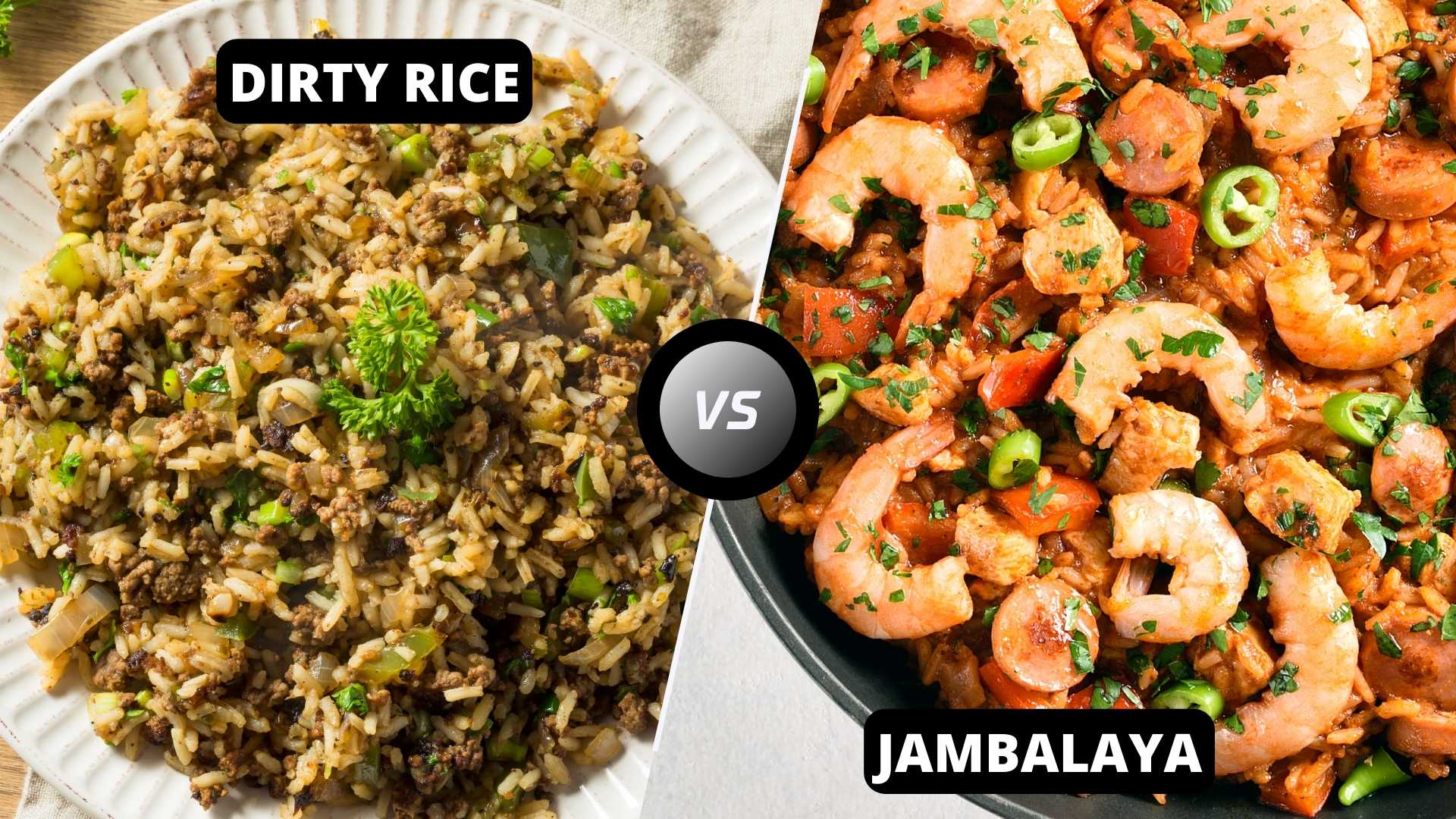Southern Creole cuisine is a unique blend of African, European, and Native American cultures that have come together over centuries in Louisiana. Two iconic dishes of this cuisine are dirty rice and jambalaya. While both dishes may look similar, they have distinct differences in their flavor, ingredients, and preparation techniques. In this article, we will explore the differences between dirty rice and jambalaya.
History of Dirty Rice and Jambalaya
Dirty rice and jambalaya are both dishes that have their roots in Louisiana’s history. Dirty rice, also known as rice dressing, was originally a peasant dish made with leftover organ meats and rice. The name “dirty rice” comes from the appearance of the dish, as the chopped liver and gizzards give the rice a brown, “dirty” color. Over time, the dish evolved to include other ingredients such as ground beef, pork, and sausage.
Jambalaya, on the other hand, is a one-pot rice dish that originated in Louisiana’s Spanish and French colonial periods. The name “jambalaya” is derived from the Spanish word “jambalaya,” which means “a mishmash.” The dish was originally made with whatever ingredients were available, such as chicken, seafood, and vegetables. It was a popular dish among hunters and fishermen, who would cook it in large cast-iron pots over an open fire.
Comparison of Dirty Rice vs Jambalaya
Ingredients
Both dirty rice and jambalaya share some common ingredients, such as rice, onion, celery, and bell pepper, which are known as the “holy trinity” of Southern cooking. However, the two dishes differ in the other ingredients that are added. Dirty rice typically includes organ meats such as chicken liver and gizzards, while jambalaya may include chicken, sausage, shrimp, or crawfish.
Jambalaya also typically includes tomatoes, which are not used in dirty rice. The use of spices is also different, with dirty rice using more traditional Cajun spices such as cayenne pepper, while jambalaya is seasoned with a mix of spices including thyme, oregano, and bay leaves.
Cooking Method
Dirty rice and jambalaya are both cooked in a similar way, using a one-pot method in which the rice is cooked with the other ingredients. However, the preparation of the rice is different. In dirty rice, the rice is cooked separately and then added to the meat and vegetable mixture. Jambalaya, on the other hand, is cooked all in one pot, with the rice absorbing the flavors of the other ingredients as it cooks.
Flavor Profiles
The flavor profiles of dirty rice and jambalaya are distinct. Dirty rice has a rich, earthy flavor from the use of organ meats, which gives it a unique umami taste. The dish is also spicy, with a kick from the cayenne pepper and other spices. Jambalaya, on the other hand, has a milder, tomato-based flavor. The use of a wider variety of ingredients, such as chicken, shrimp, and sausage, gives jambalaya a complex flavor profile. The spices used in jambalaya also create a more layered taste, with thyme, oregano, and bay leaves all adding their own distinct notes.
Regional Differences
Dirty rice and jambalaya are prepared and served differently in different regions of Louisiana. In New Orleans, dirty rice is often served as a side dish, while in Cajun country, it may be served as a main dish. Jambalaya, on the other hand, is a staple in Cajun and Creole cooking and is often served as a main course. The two dishes also differ in their consistency, with dirty rice being more grainy and loose, while jambalaya is more cohesive and saucy.
Serving Suggestions
Both dirty rice and jambalaya can be served as a meal on their own or as a side dish to accompany other Creole dishes. Dirty rice is often served with fried chicken or seafood, while jambalaya can be paired with grilled meats or seafood. Cornbread or French bread is also a popular accompaniment to both dishes.
Conclusion
In conclusion, dirty rice and jambalaya are two iconic dishes of Southern Creole cuisine that share some commonalities but also have distinct differences. While both dishes use rice and the “holy trinity” of Southern cooking, they differ in their use of ingredients, spices, and cooking methods. Dirty rice is known for its rich, earthy flavor from the use of organ meats, while jambalaya has a milder, tomato-based flavor with a mix of meats and seafood.
Ultimately, the choice between dirty rice and jambalaya comes down to personal taste preferences. So, whether you’re a fan of the spicy, umami flavor of dirty rice or the layered, complex taste of jambalaya, there’s no shortage of delicious Southern Creole cuisine to enjoy.
